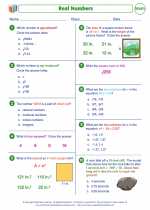Equal To
In math, the concept of "equal to" refers to the relationship between two quantities that have the same value. The symbol used to denote equality is "=", and it is used to compare two expressions or values to determine if they are the same.
Understanding Equality
When we say that two quantities are equal, it means that they represent the same amount or value. For example, 5 = 5, which reads "5 is equal to 5," indicates that both 5s are representing the same quantity.
Equality is a fundamental concept in mathematics and is used in various operations such as addition, subtraction, multiplication, division, and equations.
Examples of Equality
Here are some examples of equality in math:
- 2 + 3 = 5
- 10 - 4 = 6
- 3 × 4 = 12
- 20 ÷ 5 = 4
Properties of Equality
When working with equality, it's important to understand the properties that govern the relationship between two equal quantities:
- Reflexive Property: Any quantity is equal to itself. For example, a = a.
- Symmetric Property: If a = b, then b = a.
- Transitive Property: If a = b and b = c, then a = c.
- Addition Property of Equality: If a = b, then a + c = b + c.
- Subtraction Property of Equality: If a = b, then a - c = b - c.
- Multiplication Property of Equality: If a = b, then a × c = b × c.
- Division Property of Equality: If a = b and c ≠ 0, then a ÷ c = b ÷ c.
Study Guide
When studying the concept of "equal to," it's important to practice solving equations and understanding the properties of equality. Here are some key points to focus on:
- Practice writing and solving equations using the "=" symbol.
- Understand the reflexive, symmetric, and transitive properties of equality.
- Work on applying the addition, subtraction, multiplication, and division properties of equality when solving equations.
- Review real-life examples of equality to understand its practical applications.
- Complete practice problems to reinforce your understanding of equality in math.
By mastering the concept of "equal to" and its properties, you'll be well-equipped to tackle more advanced mathematical concepts and problem-solving tasks.
.◂Math Worksheets and Study Guides Eighth Grade. Real numbers
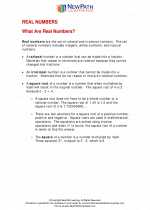
 Worksheet/Answer key
Worksheet/Answer key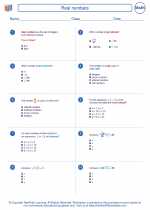
 Worksheet/Answer key
Worksheet/Answer key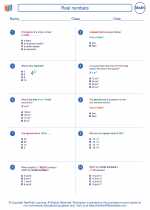
 Worksheet/Answer key
Worksheet/Answer key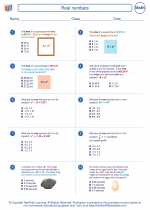
 Worksheet/Answer key
Worksheet/Answer key